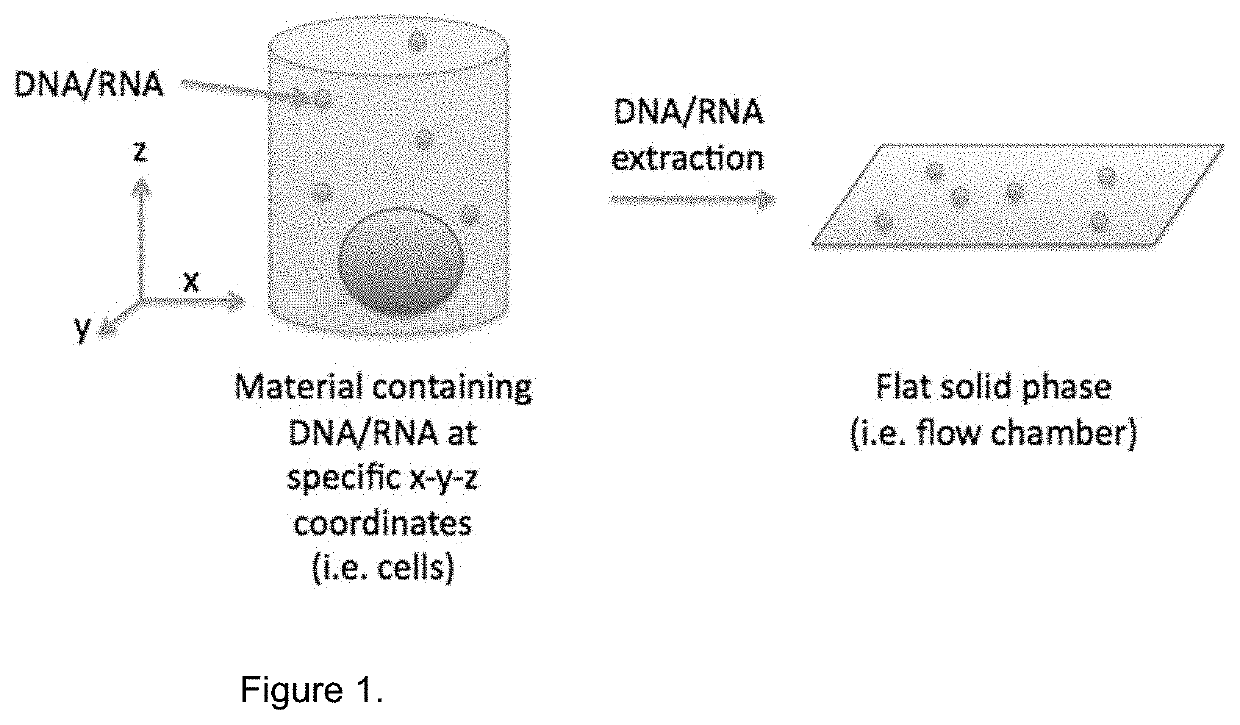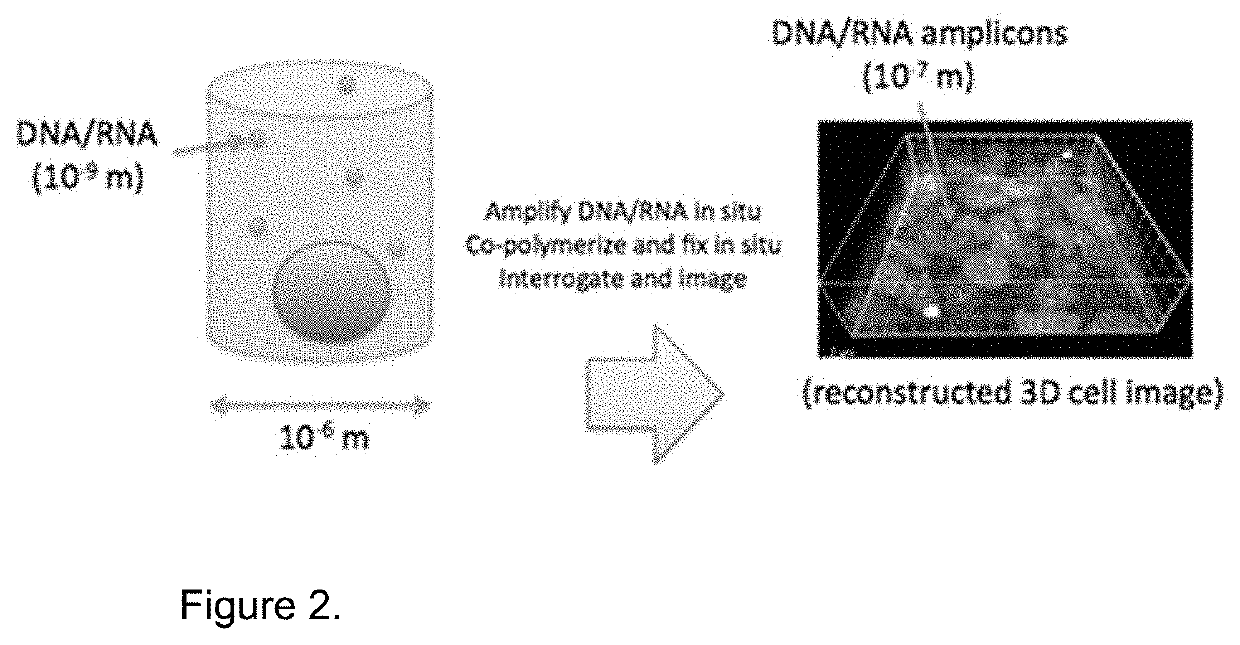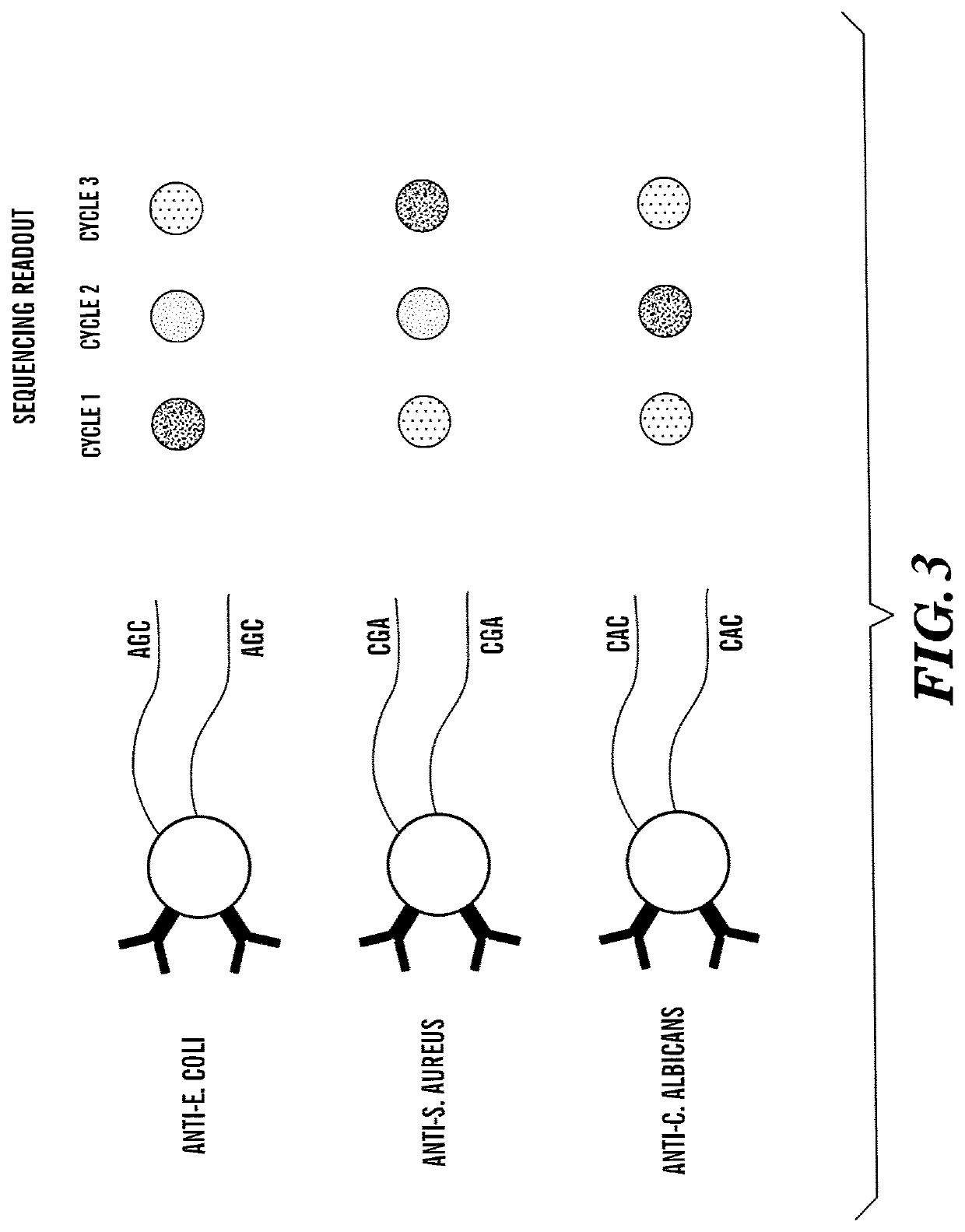Method for Generating A Three-Dimensional Nucleic Acid Containing Matrix
a three-dimensional nucleic acid and matrix technology, applied in the field of three-dimensional matrix of nucleic acids, can solve the problems of increasing precision, and inability to identify the cellular origin of individual nucleic acids, and reducing the likelihood of probe overlap, etc., to achieve the effect of reducing instrument cost, limiting field of view/sample size, and high optical magnification
- Summary
- Abstract
- Description
- Claims
- Application Information
AI Technical Summary
Benefits of technology
Problems solved by technology
Method used
Image
Examples
example 1
Hybridization-Based Detection Methods of Detection Reagents
[0508]A solution suspension of streptavidin-coated Dynabeads (of about 1 μm), each conjugated to one of six nucleic acid labels and a corresponding probe reagent specific for a target analyte, wherein each of the nucleic acid labels comprised at least one pre-determined subsequence, e.g., a first (e.g., A1, A2, and A3) and a second (B1, B2, and B3) pre-determined subsequence, was prepared. The nucleic acid labels can comprise a nucleic acid sequence of any length. In some embodiments, the nucleic acid labels can comprise at least 15 nucleotides, at least 20 nucleotides, at least 22 nucleotides, or at least 24 nucleotides. A sample containing multiple target analytes was contacted with the target analyte-specific Dynabeads, so that the Dynabeads would bind to the respective target analyte on the sample. Any unbound Dynabeads was then removed, e.g., by washing. In the first readout, a set of three decoder probes, each with a d...
PUM
| Property | Measurement | Unit |
|---|---|---|
| size | aaaaa | aaaaa |
| temperatures | aaaaa | aaaaa |
| temperatures | aaaaa | aaaaa |
Abstract
Description
Claims
Application Information
 Login to View More
Login to View More - R&D
- Intellectual Property
- Life Sciences
- Materials
- Tech Scout
- Unparalleled Data Quality
- Higher Quality Content
- 60% Fewer Hallucinations
Browse by: Latest US Patents, China's latest patents, Technical Efficacy Thesaurus, Application Domain, Technology Topic, Popular Technical Reports.
© 2025 PatSnap. All rights reserved.Legal|Privacy policy|Modern Slavery Act Transparency Statement|Sitemap|About US| Contact US: help@patsnap.com



